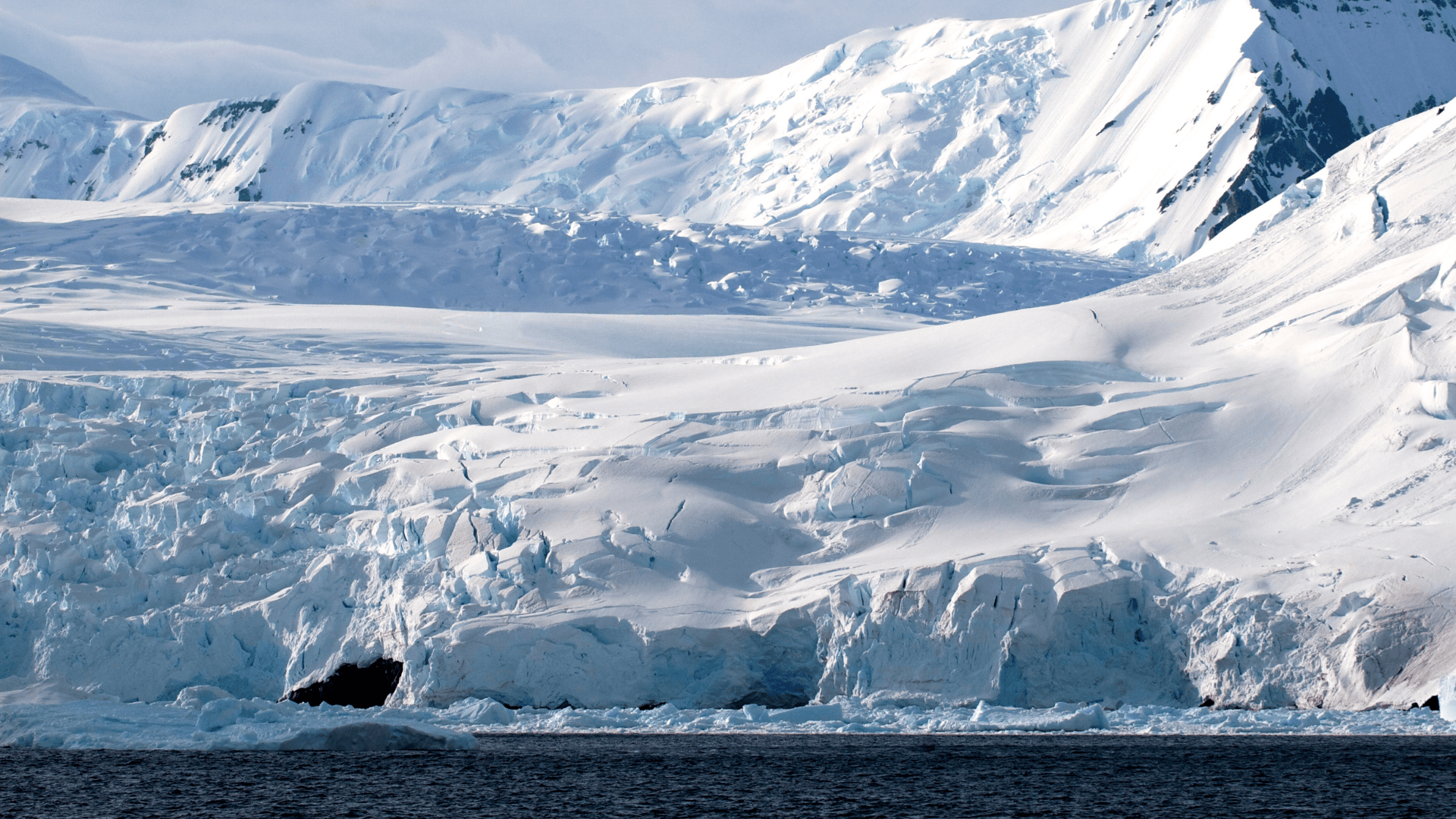Climate Determines Mammal Distribution, Reveals Study by North Carolina State University
Climate Determines Mammal Distribution, Reveals Study by North Carolina State University
Climate Determines Mammal Distribution, Reveals Study by North Carolina State University
Sep 4, 2024
Sep 4, 2024
Sep 4, 2024

Illustrative image. Credit: Getty Images via Canva.
Illustrative image. Credit: Getty Images via Canva.
Illustrative image. Credit: Getty Images via Canva.
A study using over 6,000 camera traps in the U.S. reveals that climate is the main factor in mammals' habitat choices, surpassing human influence. The research highlights the future impact of climate change on species.
A study using over 6,000 camera traps in the U.S. reveals that climate is the main factor in mammals' habitat choices, surpassing human influence. The research highlights the future impact of climate change on species.
A study using over 6,000 camera traps in the U.S. reveals that climate is the main factor in mammals' habitat choices, surpassing human influence. The research highlights the future impact of climate change on species.
A study from North Carolina State University has revealed that climate, especially factors like temperature and precipitation, is the primary determinant of where mammals choose to live. Using data from over 6,000 camera traps across the United States, researchers found that climatic conditions have a far greater effect on mammal distribution than human activity. These findings are crucial for predicting how climate change could affect the habitats of various species in the future.
Climate as the Decisive Factor
The research, which analyzed data from 6,645 camera traps and covered 25 mammal species, identified climate as the most influential factor in determining mammal populations' distribution. Elements like average temperature and precipitation levels were the main drivers of mammals' habitat choices, outweighing other variables such as proximity to urban areas or agricultural activities.
"While human presence affects some species, especially in highly urbanized regions, climate stood out as the main factor in mammal distribution," said Roland Kays, the research's lead author.
Impact of Human Activities
Although climate was the dominant factor, the study highlighted that human activity still has notable effects in some cases. Species living near cities or in areas heavily altered by agriculture are the most affected by human presence, either avoiding or adapting to these environments.
However, the effects of human activities were classified as secondary compared to climate variables, suggesting that climate change will have a more profound impact on mammal habitats than urban or agricultural expansion.
Creation of New Ecoregions
One innovative aspect of the research was the definition of new ecoregions based on mammals aligned with plant growth patterns. These ecoregions were established by correlating mammals' habitat preferences with the climatic and vegetative conditions of the areas studied. The connection between mammals and local vegetation reinforces that mammal habitats will also be affected as climate alters plant growth.
Implications for Climate Change
The research warns about the drastic changes that global warming may bring to mammal habitats. With rising temperatures and changing precipitation patterns, many mammal species may need to migrate to new areas or face the risk of extinction.
Understanding how climate influences species distribution is paramount to predicting future changes and developing conservation strategies. "Knowing how climate impacts mammals will help us predict where they will live in a hotter, more uncertain future," Kays explained.
—
North Carolina State University's research sheds new light on the decisive role of climate in mammal distribution, with significant implications for the future of biodiversity. As the planet continues to warm, the impact on mammal habitats will be inevitable, and these findings are a critical step toward anticipating and mitigating these changes.
—
Want to learn more about how climate influences mammal life? Check out the full article that inspired this piece and explore the details of the research from North Carolina State University.
A study from North Carolina State University has revealed that climate, especially factors like temperature and precipitation, is the primary determinant of where mammals choose to live. Using data from over 6,000 camera traps across the United States, researchers found that climatic conditions have a far greater effect on mammal distribution than human activity. These findings are crucial for predicting how climate change could affect the habitats of various species in the future.
Climate as the Decisive Factor
The research, which analyzed data from 6,645 camera traps and covered 25 mammal species, identified climate as the most influential factor in determining mammal populations' distribution. Elements like average temperature and precipitation levels were the main drivers of mammals' habitat choices, outweighing other variables such as proximity to urban areas or agricultural activities.
"While human presence affects some species, especially in highly urbanized regions, climate stood out as the main factor in mammal distribution," said Roland Kays, the research's lead author.
Impact of Human Activities
Although climate was the dominant factor, the study highlighted that human activity still has notable effects in some cases. Species living near cities or in areas heavily altered by agriculture are the most affected by human presence, either avoiding or adapting to these environments.
However, the effects of human activities were classified as secondary compared to climate variables, suggesting that climate change will have a more profound impact on mammal habitats than urban or agricultural expansion.
Creation of New Ecoregions
One innovative aspect of the research was the definition of new ecoregions based on mammals aligned with plant growth patterns. These ecoregions were established by correlating mammals' habitat preferences with the climatic and vegetative conditions of the areas studied. The connection between mammals and local vegetation reinforces that mammal habitats will also be affected as climate alters plant growth.
Implications for Climate Change
The research warns about the drastic changes that global warming may bring to mammal habitats. With rising temperatures and changing precipitation patterns, many mammal species may need to migrate to new areas or face the risk of extinction.
Understanding how climate influences species distribution is paramount to predicting future changes and developing conservation strategies. "Knowing how climate impacts mammals will help us predict where they will live in a hotter, more uncertain future," Kays explained.
—
North Carolina State University's research sheds new light on the decisive role of climate in mammal distribution, with significant implications for the future of biodiversity. As the planet continues to warm, the impact on mammal habitats will be inevitable, and these findings are a critical step toward anticipating and mitigating these changes.
—
Want to learn more about how climate influences mammal life? Check out the full article that inspired this piece and explore the details of the research from North Carolina State University.
A study from North Carolina State University has revealed that climate, especially factors like temperature and precipitation, is the primary determinant of where mammals choose to live. Using data from over 6,000 camera traps across the United States, researchers found that climatic conditions have a far greater effect on mammal distribution than human activity. These findings are crucial for predicting how climate change could affect the habitats of various species in the future.
Climate as the Decisive Factor
The research, which analyzed data from 6,645 camera traps and covered 25 mammal species, identified climate as the most influential factor in determining mammal populations' distribution. Elements like average temperature and precipitation levels were the main drivers of mammals' habitat choices, outweighing other variables such as proximity to urban areas or agricultural activities.
"While human presence affects some species, especially in highly urbanized regions, climate stood out as the main factor in mammal distribution," said Roland Kays, the research's lead author.
Impact of Human Activities
Although climate was the dominant factor, the study highlighted that human activity still has notable effects in some cases. Species living near cities or in areas heavily altered by agriculture are the most affected by human presence, either avoiding or adapting to these environments.
However, the effects of human activities were classified as secondary compared to climate variables, suggesting that climate change will have a more profound impact on mammal habitats than urban or agricultural expansion.
Creation of New Ecoregions
One innovative aspect of the research was the definition of new ecoregions based on mammals aligned with plant growth patterns. These ecoregions were established by correlating mammals' habitat preferences with the climatic and vegetative conditions of the areas studied. The connection between mammals and local vegetation reinforces that mammal habitats will also be affected as climate alters plant growth.
Implications for Climate Change
The research warns about the drastic changes that global warming may bring to mammal habitats. With rising temperatures and changing precipitation patterns, many mammal species may need to migrate to new areas or face the risk of extinction.
Understanding how climate influences species distribution is paramount to predicting future changes and developing conservation strategies. "Knowing how climate impacts mammals will help us predict where they will live in a hotter, more uncertain future," Kays explained.
—
North Carolina State University's research sheds new light on the decisive role of climate in mammal distribution, with significant implications for the future of biodiversity. As the planet continues to warm, the impact on mammal habitats will be inevitable, and these findings are a critical step toward anticipating and mitigating these changes.
—
Want to learn more about how climate influences mammal life? Check out the full article that inspired this piece and explore the details of the research from North Carolina State University.
Compartilhar em:
Compartilhar em:

DeepSeek AI: o chatbot chinês que está sacudindo o mercado global
Feb 7, 2025

Estudo revela que a vida social ativa pode reduzir o risco de demência
Feb 4, 2025

Ano Novo Lunar 2025: a chegada do Ano da Serpente
Jan 30, 2025

Nova hipótese sobre a origem dos dinossauros desafia conceitos tradicionais
Jan 27, 2025

Ambiente potencialmente habitável em Marte é descoberto pelo Perseverance
Dec 20, 2024

As emoções e o corpo humano: conexões milenares nos textos neo-assírios
Dec 20, 2024

Estudo relaciona poluição do ar ao risco de tromboembolismo venoso
Dec 20, 2024

Colapso da plataforma de gelo Conger: alerta para a Antártica Oriental
Dec 20, 2024

Revolução XRISM: novas descobertas sobre buracos negros supermassivos
Oct 15, 2024

Estudo aponta que duplicação do gene AMY1, relacionado à digestão de amido, precede a agricultura
Oct 14, 2024

Nascimentos na UE caem para menos de 4 milhões pela primeira vez desde 1960
Oct 11, 2024

Escavação na Dinamarca revela 50 esqueletos Viking incrivelmente preservados
Oct 10, 2024

Estudo indica maior incidência de asma e rinite alérgica em pessoas nascidas no outono e inverno na Finlândia
Oct 9, 2024

Estudo demonstra semelhanças entre a puberdade de adolescentes da Idade do Gelo e jovens modernos
Oct 8, 2024

Análise de DNA em múmias chinesas de 3.600 anos revela queijo mais antigo do mundo
Oct 7, 2024

Estudo revela estabilidade genética de populações da África Austral por 10 milênios
Oct 4, 2024

Nove lugares míticos que podem ter existido, segundo descobertas arqueológicas
Oct 3, 2024

Como os direitos humanos podem salvar recifes de coral e responsabilizar governos
Oct 2, 2024

Relatório da Carbon Brief aponta que 2024 pode ser o ano mais quente da história
Sep 4, 2024

Clima determina a distribuição de mamíferos, revela estudo da Universidade Estadual da Carolina do Norte
Sep 4, 2024
Ver Também
Ver Também
Ver Também
Ver Também

DeepSeek AI: o chatbot chinês que está sacudindo o mercado global
Feb 7, 2025

Estudo revela que a vida social ativa pode reduzir o risco de demência
Feb 4, 2025

Ano Novo Lunar 2025: a chegada do Ano da Serpente
Jan 30, 2025

Nova hipótese sobre a origem dos dinossauros desafia conceitos tradicionais
Jan 27, 2025

Ambiente potencialmente habitável em Marte é descoberto pelo Perseverance
Dec 20, 2024

As emoções e o corpo humano: conexões milenares nos textos neo-assírios
Dec 20, 2024

Estudo relaciona poluição do ar ao risco de tromboembolismo venoso
Dec 20, 2024

Colapso da plataforma de gelo Conger: alerta para a Antártica Oriental
Dec 20, 2024

Revolução XRISM: novas descobertas sobre buracos negros supermassivos
Oct 15, 2024

Estudo aponta que duplicação do gene AMY1, relacionado à digestão de amido, precede a agricultura
Oct 14, 2024

Nascimentos na UE caem para menos de 4 milhões pela primeira vez desde 1960
Oct 11, 2024

Escavação na Dinamarca revela 50 esqueletos Viking incrivelmente preservados
Oct 10, 2024

Estudo indica maior incidência de asma e rinite alérgica em pessoas nascidas no outono e inverno na Finlândia
Oct 9, 2024

Estudo demonstra semelhanças entre a puberdade de adolescentes da Idade do Gelo e jovens modernos
Oct 8, 2024

Análise de DNA em múmias chinesas de 3.600 anos revela queijo mais antigo do mundo
Oct 7, 2024

Estudo revela estabilidade genética de populações da África Austral por 10 milênios
Oct 4, 2024

Nove lugares míticos que podem ter existido, segundo descobertas arqueológicas
Oct 3, 2024

Como os direitos humanos podem salvar recifes de coral e responsabilizar governos
Oct 2, 2024

Relatório da Carbon Brief aponta que 2024 pode ser o ano mais quente da história
Sep 4, 2024

Clima determina a distribuição de mamíferos, revela estudo da Universidade Estadual da Carolina do Norte
Sep 4, 2024